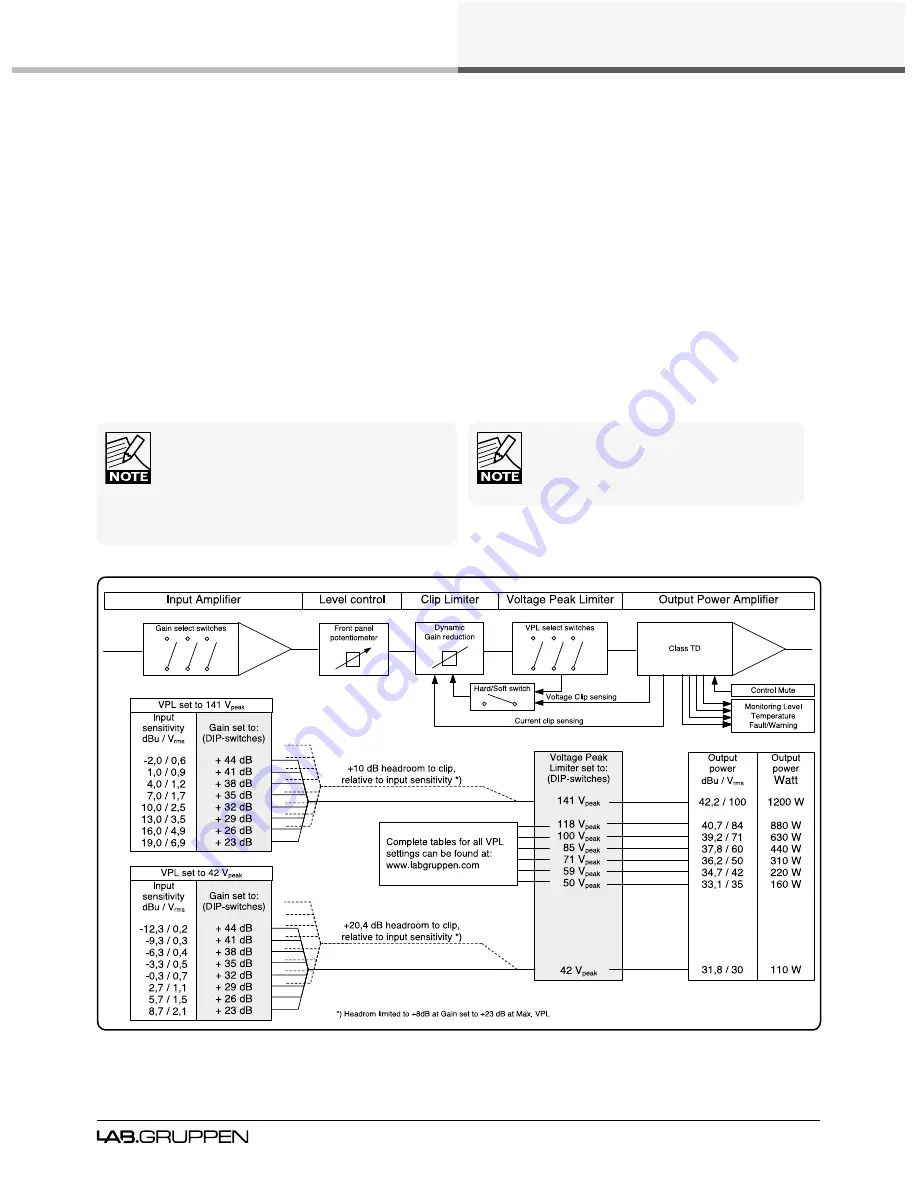
5. Operation and Performance
14
C Series C 88:4, C 68:4, C 48:4, C 28:4 and C 16:4 Operation Manual rev 2.2.3
5.3.2 Headroom, sensitivity and VPL / Gain settings
The input amplifier and limiter system is designed to accommodate extremes of performance. Typically,
exceeding maximum input by much as +10 dB will only result in a 1% increase in distortion. The following
schematics illustrate how the adjusable VPL and Gain circuitry affect input sensitivity and output power:
The tables to the left of the drawing below show input sensitivity for a C 68:4 with an 8 ohm load and 141 V
peak (max.) and 42 V peak (min.) respectively for the eight different gain stages b23 dB and +44 dB.
The resulting output power is displayed in dBu, Vrms and Watts in the tables to the far right. Complete input
sensitivity tables for all VPL and Gain settings for as applicable to C Series models can be found at www.
labgruppen.com.
The headroom available through the input stage to the clip limiter is shown by the dotted lines as +10 dB at 141
V peak and +20.4 dB at 42 V peak. These lines illustrate the additional signal level that can be accepted at the
input before any significant distortion will appear at the input stage.
If you use the level potentiometer in the signal chain to
reduce the level by an amount greater than the headroom
relative to input sensitivity, AND you drive the amplifier to clip
level, you are in danger of clipping the input stage before the
current or voltage peak limiters are activated.
When bridging two channels, you must add +6 dB to
the input sensitivity to achieve maximum output voltage
due to the automatic -6 dB gain compensation inserted
by the amplifier.
C 68:4 VPL and GAIN settings
















































